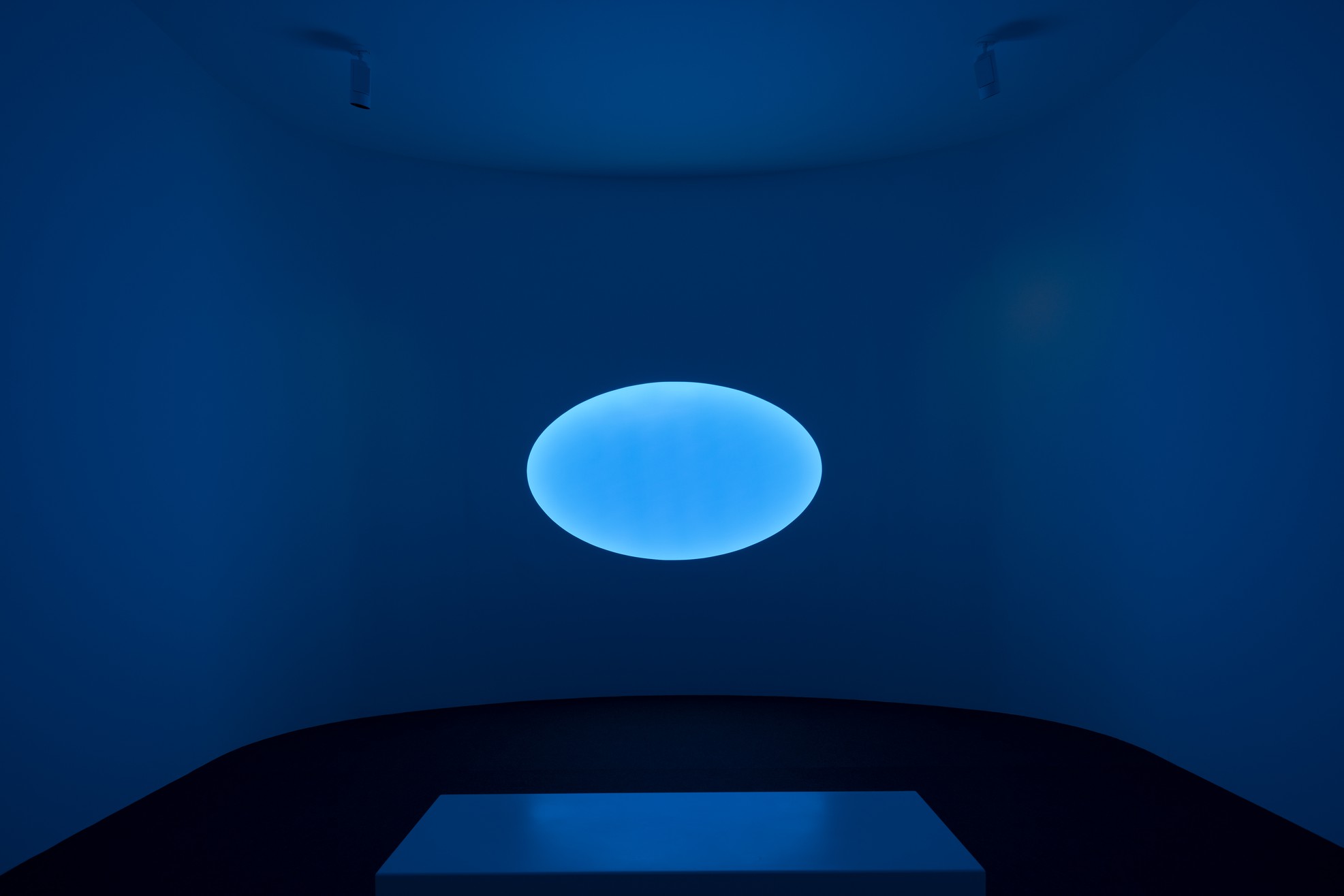PREVIEW: James Turrell-Confidences
 James Turrell’s work involves explorations in light and space that speak to viewers without words, impacting the eye, body, and mind with the force of a spiritual awakening. He studied mathematics and perceptual psychology, and his background as a Quaker and training as a pilot also inform his practice. After his first sculptures using fire, James Turrell began to construct projections that produce illusionistic geometric shapes.
James Turrell’s work involves explorations in light and space that speak to viewers without words, impacting the eye, body, and mind with the force of a spiritual awakening. He studied mathematics and perceptual psychology, and his background as a Quaker and training as a pilot also inform his practice. After his first sculptures using fire, James Turrell began to construct projections that produce illusionistic geometric shapes.
By Dimitris Lempesis
Photo: Gagosian Archive
James Turrell in his solo exhibition “Confidences” presents two new works: “Ariel” (2022) a large diamond-shaped work in vibrant colors and “Jeu” (2022), a medium ellipse-shaped work in blush hues. They are shown together within a custom-built space in Gagosian Gallery at the rue de Ponthieu, bringing them into dialogue with each other. Turrell has since the 1960s been exploring a variety of perceptual phenomena, ranging from sensory deprivation to intense optical effects. According to Turrell, his career as an artist began with a visual misperception. As a psychology major at Pomona College in 1965, he enjoyed art history, and especially the works of art by Mark Rothko he saw during his art history lectures. He was later disappointed on a trip to New York when he saw his first canvas by Rothko, which lacked the glow it appeared to have when shown via slide projector. The fact that a projected image of a Rothko might possess a glow that exceeded the original was Turrell’s initial impetus for becoming a light-based artist. In 1966, he began working with light in his Ocean Park, California, studio. Early works such as “Afrum-Proto” (1966) and the “Mendota Stoppages” (1969–74), which employ planes of light in relation to architecture, became the basis for an ongoing manipulation of the built and natural environments of which these new works are a part. Turrell continues to use light as his primary subject and material, in formally simple projects that draw attention to the limits of seeing while seeking to expand the wordless thought that they provoke. Throughout these permutations, the light that is normally used to illuminate is assigned form and structure, making it the revelation itself. Turrell began the “Glass” Series, of which these new works are part, in 2001. The newest examples have been programmed using the latest LED technology, while still employing physical forms related to the artist’s “Shallow Space Constructions” of the late 1960s and early 1970s. In the newer series, he continues exploring the fusion of the technological with the sensory, inducing meditative states. Each installation features planes of light that move slowly against and into one another behind an aperture to generate alternating impressions of total flatness and near-infinite depth. The combinations test our perception of space and evoke earlier painterly works by Ad Reinhardt and Mark Rothko. In Paris, Ariel, titled for the archangel of the natural world, and Jeu, named after the gnostic Books of Jeu, face off in an installation that underscores their similarities and divergences to create an immersive experience. Since the late 1970s, Turrell has worked to transform Roden Crater into a naked-eye observatory that reconceives the landscape as a multisensory experience. Located in the Painted Desert region of Northern Arizona, it is an unprecedented large-scale artwork created within a volcanic cinder cone. Representing the culmination of the artist’s lifelong research in the field of human visual and psychological perception, Roden Crater is a controlled environment for the contemplation of the light and space of the sky that harks back to the hypaethral structure created first by the Egyptians, then used by the Greeks, and seen as well in the Roman Pantheon, where sky becomes part of architecture. Set in a stage that resonates directly with geologic time, Roden Crater connects its guests to the multitude of celestial bodies we can see from Earth and the light that reaches us from the beginning of time. While minimally invasive to the external natural landscape, internally the red and black cinder is being transformed into engineered spaces where a series of aligned tunnels, portals, and apertures open onto pristine skies, capturing light directly from the sun in daylight hours, and the planets and stars at night. Guests can experience the isolated and intensified light from celestial objects within spaces, and the celestial objects themselves when looking without. As construction on Roden Crater is ongoing, it is presently closed to the public. Fundraising is underway to complete the construction and open Roden Crater to the public.
Photo: James Turrell, Accretion Disk, 2018 LED and etched glass, 90 ½ × 55 ⅛ inches (229.8 × 139.9 cm), Museum Frieder Burda, Baden-Baden, Germany, © James Turrell. Photo: Florian Holzherr, Courtesy the artist and Gagosian
Info: Gagosian Gallery, 4 rue de Ponthieu, Paris, France, Duration: 19/10-22/2/2022, Days & Hours: Tue-Sat 10:30-1/:30, https://gagosian.com/
